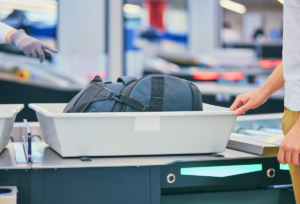When a storm strikes, where is the best place to be? Well ideally, nowhere near it! But unfortunately, there’s always someone there to take the brunt of the blast.
So dry land or at sea? Let’s weigh up the pros and cons:
If you’re caught in its path when a storm strikes on dry land, you’re in for a bumpy ride! Where a ship can dodge its path, the land you’re on can’t move and therefore it’s wise to move out of its path and soon!
However being stuck out at sea might not be that great of an idea! With nothing but waves and tonnes of water surrounding you, your options are pretty limited. At least on dry land you have the chance to run…..you can’t run far on a ship!
Treacherous Tornadoes:
Hundreds of tornadoes are recorded each year in the US, fortunately, the majority of them do not cause major damage or death. However there have been cases which have left a devastating aftermath, leaving thousands injured and hundreds dead.
On March 18, 1925, the tri-state tornado struck, touching ground in Ellington, Missouri. As the twister headed across states, it picked up speed as it reached Illinois, leaving the worst damage in its tracks along with its highest death toll. The tornado continued through Indiana and struck the towns of Griffin and Princeton, before dissipating northeast of Princeton.
Consequential Katrina:
One of the most memorable of all recent storms was Hurricane Katrina. After crossing southern Florida where it left some 100,000 homes without power, it strengthened in power before heading inwards towards Louisiana, then making landfall at Grand Isle on the 29th August.
By this point, Hurricane Katrina had sustained a wind speed of approximately 200 km/h. The storm ripped through New Orleans, causing extensive damage. Hurricane force winds were recorded along a 200km stretch of coastline, leaving scenes of destruction and flooding across Louisiana, Mississippi and Alabama.
Iniside The Eyewall Of Tempestuous Charley:
Lasting for a full seven days, Hurricane Charley was said to be the strongest hurricane to make US landfall since Hurricane Andrew in 1992, twelve years before. Making landfall on south western Florida at its peak strength, Hurricane Charley attained a peak intensity with winds of 150mph.
After crossing the Caribbean Sea, the hurricane storm then made a comeback, arriving on Cuba on Friday the 13th August as a category 3 hurricane. Charley was one of two major hurricanes to hit Florida that year, and one of four hurricanes that had a direct impact of the state.
Surging Storm Strikes Passing Cruise:
Leaving 42 people injured, this fascinating footage was caught on a P&O Cruise when giant waves hit the boat causing it to tilt violently.
As the Australian Pacific Sun cruise liner struggled in the high seas, staff and guests were sent careering across the floor like rag dolls….followed by tables, chairs and anything not nailed down!
The incident, which happened in 2008, left guests terrified as giant waves lashed as high as the fifth floor. One passenger, Elizabeth Basher, suffered a fractured knee during the storm. Apparently scenes like this are a very rare occurrence at sea, however something like this is enough to put a person off cruises for life!






